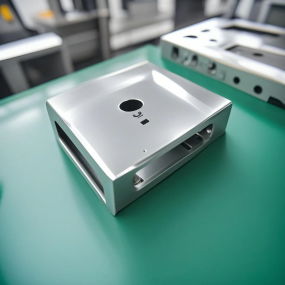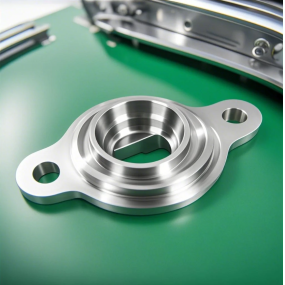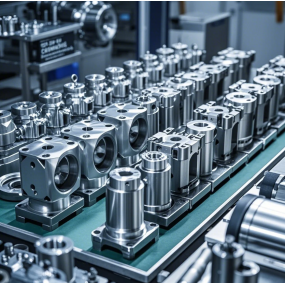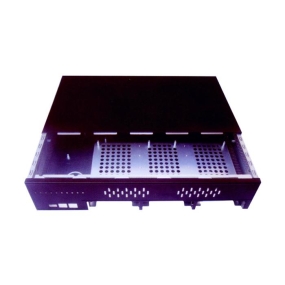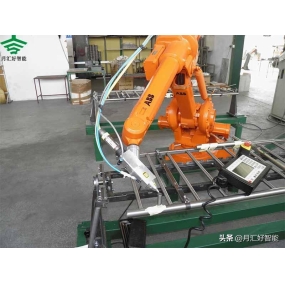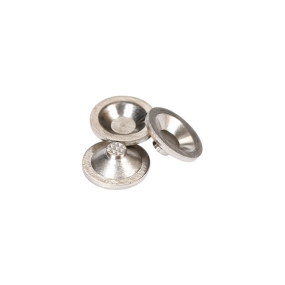Mechanical parts processing refers to the production of mechanical parts that meet manufacturing requirements through the processing of raw materials and the application of processing techniques. With the continuous development of technology and industrial production, the processing technology of mechanical parts is constantly improving, rapidly developing into an independent and complete industry. Detailed introduction to the processing of mechanical parts from the aspects of processing technology, processing accuracy, processing materials, processing equipment, etc.
1、 Processing technology
The machining process of mechanical parts mainly consists of the following steps:
1. Analysis of part drawings: Before machining mechanical parts, it is necessary to analyze the part drawings, clarify the dimensions, materials, and machining requirements of the parts, and develop machining plans.
2. Material selection: According to the requirements of the parts, select corresponding materials such as carbon steel, stainless steel, aluminum alloy, etc., to ensure that the processed parts have the required strength and durability.
3. Design and drafting: Based on the processing drawings and process requirements, design and draft the processing technology to clarify various parameters such as material consumption, processing time, and equipment costs.
4. Processing preparation: Prepare equipment, tools, and cutting fluids in a well ventilated workshop.
5. Cutting: Cutting materials on milling machines, lathes, and other machine tools according to the machining drawings and process requirements.
6. Precision machining: Precision machining is performed on the processed parts to ensure their dimensional accuracy and surface quality.
7. Inspection: Inspect the dimensions and surface quality of the processed parts to ensure compliance with design requirements.
2、 Processing accuracy
The machining accuracy of mechanical parts refers to the difference in accuracy between the finished product and the design requirements. The machining accuracy is related to factors such as machine tools, cutting tools, cutting fluids, and materials. The precision, stiffness, and repeatability of machine tools are the main factors ensuring machining accuracy. The quality, hardness, coating, and other treatments of cutting tools can also affect machining accuracy. The selection and quality of cutting fluid are also the main factors affecting machining accuracy. The integrity, hardness, and processing difficulty of materials can also affect processing accuracy.
3、 Processing materials
The processing materials for mechanical parts are mainly steel, with stainless steel, copper, aluminum alloy, and plastic as auxiliary materials. Among them, carbon steel material has a simple process and low price, and is widely used in the processing of some mechanical parts. Stainless steel material has high quality, corrosion resistance, and is suitable for the production of mechanical parts. Copper material has good conductivity, thermal conductivity, and toughness, making it suitable for the manufacturing of electronic components. Aluminum alloy is mainly used in the manufacturing of large machinery such as airplanes and automobiles. It has low density, high strength, and good surface properties, which can reduce the overall weight of the machine and improve mechanical performance.
4、 Processing equipment
Mechanical parts processing equipment includes lathes, milling machines, center cutters, planers, grinders, electrical discharge machining machines, laser cutting machines, etc. Among them, lathes and milling machines are commonly used machine tools in machining, which can meet the processing needs of most parts. Central shear is the equipment required for cutting metal, sheet metal, and other materials. Planer is suitable for machining parts with flat, straight, cam and other shapes. Grinding machines are suitable for high-precision machining and can manufacture parts with high positioning accuracy. Spark machining machines and laser cutting machines are rarely used, mainly for processing special materials and manufacturing various complex shaped parts.
The above introduces the processing of mechanical parts. With the continuous advancement of technology and industrial production, the processing technology and equipment for mechanical parts will continue to improve, promoting the development of the mechanical parts processing industry.


 Spanish
Spanish Arabic
Arabic French
French Portuguese
Portuguese Belarusian
Belarusian Japanese
Japanese Russian
Russian Malay
Malay Icelandic
Icelandic Bulgarian
Bulgarian Azerbaijani
Azerbaijani Estonian
Estonian Irish
Irish Polish
Polish Persian
Persian Boolean
Boolean Danish
Danish German
German Filipino
Filipino Finnish
Finnish Korean
Korean Dutch
Dutch Galician
Galician Catalan
Catalan Czech
Czech Croatian
Croatian Latin
Latin Latvian
Latvian Romanian
Romanian Maltese
Maltese Macedonian
Macedonian Norwegian
Norwegian Swedish
Swedish Serbian
Serbian Slovak
Slovak Slovenian
Slovenian Swahili
Swahili Thai
Thai Turkish
Turkish Welsh
Welsh Urdu
Urdu Ukrainian
Ukrainian Greek
Greek Hungarian
Hungarian Italian
Italian Yiddish
Yiddish Indonesian
Indonesian Vietnamese
Vietnamese Haitian Creole
Haitian Creole Spanish Basque
Spanish Basque


